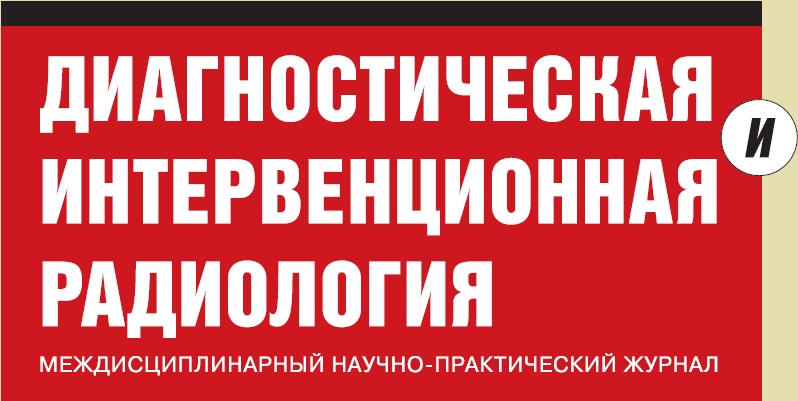|
авторы:
|
ключевые слова:
|
Аннотация: Цель: выявить предикторы осложнений в раннем периоде после ССА и КЭЭ. Материалы и методы: в ретроспективный анализ включено 908 пациентов, перенесших изолированные стентирование сонных артерий (N=522) и каротидную эндартерэктомию (N=386). Не вошли в исследование больные с симультанными кардиохирургическими вмешательствами, а также с симптомными стенозами сонных артерий (СА). Конечной точкой являлось острое нарушение мозгового кровообращения (ОНМК) в раннем послеоперационном периоде в ипсилатеральном бассейне, подтвержденное при физикальном обследовании неврологом и данными КТ или МРТ головного мозга. Для выявления предикторов использовался многофакторный регрессионный анализ, в который были включены факторы, способные влиять на исход как эндоваскулярного, так и хирургического методов. Результаты: по результатам сравнительного анализа пациенты двух групп были схожи по основным клинико-демографическим показателям. Летальных исходов и церебральных геморрагических осложнений в раннем периоде не отмечено. Частота ОНМК, в эндоваскулярной и хирургической группах составила 1,7% и 1,04% (р=0,5). Суммарный показатель инсультов и транзиторных ишемических атак (ТИА) при использовании двух методов составил 1,4%. Преобладание ТИА в абсолютном выражении, без достижения статистически значимой разницы, было свойственно эндоваскулярной группе (1,3% против 0,3%, р=0,1). По результатам регрессионного анализа предиктором возникновения ОНМК по ишемическому типу в раннем периоде стала степень стеноза СА у пациентов, перенесших ССА (ОР 1,318 95% ДИ 1,131-1,535, р<0,001). В хирургической группе ни один из исследуемых факторов не являлся предиктором ТИА или инсультов. Выводы: независимым предиктором ТИА и инсультов в раннем периоде после ССА, в отличие от КЭЭ, являлась исходная степень стеноза сонных артерий. Список литературы 1. Brott TG, Halperin JL, Abbara S, Bacharach JM, Barr JD, Bush RL, et al. 2011 ASA/ACCF/AHA/AANN/ AANS/ACR/ ASNR/CNS/SAIP/SCAI/SIR/SNIS/SVM/SVS guideline on the management of patients with extracranial carotid and vertebral artery disease:executive summary: a report of the American College of Cardiology Foundation/American Heart Association Task Force of Practice Guidelines, and the American Stroke Association, American Association of Neuroscience Nurses, American Association of Neurological Surgeons, American College of Radiology, American Society of Neuroradiology, Congress of Neurological Surgeons, Society of Atherosclerosis Imaging and Prevention, Society for Cardiovascular Angiography and Interventions, Society of Interventional Radiology, Society of NeuroInterventionalSurgery, Society for Vascular Medicine, and Society for VascularSurgery. Developed in collaboration with the American Academyof Neurology and Society of Cardiovascular Computed Tomography Catheter Cardiovasc Interv 2013; 81:76-123. 2. Sakai N, Yamagami H, Matsubara Y et al. Prospective registry of carotid artery stenting in Japan: investigation on device and antiplatelet for carotid artery stenting. J Stroke Cerebrovasc Dis.2014; 23: 1374-1384. 3. Jhang K, Huang J, NforIs O et al. Is Extended Duration of Dual Antiplatelet Therapy After Carotid Stenting Beneficial? Medicine 2015; 94:40. 4. Mo D, Wang B, Ma N, et al. Comparative outcomes of carotid artery stenting for asymptomatic and symptomatic carotid artery stenosis: a single-center prospective study. J Neurointerv Surg. 2016; 8(2): 126-129. 5. Bonati LH, Dobson J, Featherstone RL, et al. Longterm outcomes after stenting versus endarterectomy for treatment of symptomatic carotid stenosis: the Internation al Carotid Stenting Study (ICSS) randomised trial. Lancet. 2015; 385: 529-538. 6. Stingele R, Berger J, Alfke K, et al. Clinical and angiographic risk factors for stroke and death within 30 days after carotid endarterectomy and stent-protected angioplasty: a subanalysis of the SPACE study. Lancet Neurol 2008; 7: 216-222. 7. Howard VJ, Lutsep HL, Mackey A, et al. Influence of sex on outcomes of stenting versus endarterectomy: a subgroup analysis of the Carotid Revascularization Endarterectomy versus Stenting Trial (CREST). Lancet Neurol 2011; 10: 530-537. 8. Setacci C, Chisci E, Setacci F, et al. Siena carotid artery stenting score: a risk modeling study for individual patients. Stroke 2010; 41: 1259-1265. 9. AbuRahma AF, Alhalbouni S, Abu-Halimah S, et al. Impact of chronic renal insufficiency on the early and late clinical outcomes of carotid artery stenting using serum creatinine vs glomerular filtration rate. J Am Coll Surg 2014; 218: 797- 805. 10. Kofoed SC, Wittrup HH, Sillesen H, Nordestgaard BG. Fibrinogen predicts ischaemic stroke and advanced atherosclerosis but not echolucent, rupture-prone carotid plaques: the Copenhagen City Heart Study. Eur Heart J 2003;24:567-576. 11. Dosa E, Rugonfalvi-Kiss S, Prohaszka Z, Szabo A, Karadi I, Selmeci L, et al. Marked decrease in the levels of two inflammatory markers, hs-C-reactive protein and fibrinogen in patients with severe carotid atherosclerosis after eversion carotid endarterectomy. Inflamm Res 2004; 53:631-635. 12. Maresca G, Di Blasio A, Marchioli R, Di Minno G. Measuring plasma fibrinogen to predict stroke and myocardial infarction: an update. Arterioscler Thromb Vasc Biol 1999; 19:1368-1377. 13. Gray WA,Yadav JS, Verta P, et al. The CAPTURE registry: predictors of outcomes in carotid artery stenting with embolic protection for high surgical risk patients in the early post-approval setting. Catheter Cardiovasc Interv 2007; 70: 1025-1033. 14. Theiss W, Hermanek P, Mathias K, et al. Predictors of death and stroke after carotid angioplasty and stenting: a subgroup analysis of the Pro-CAS data. Stroke 2008; 39: 2325-2330. 15. Chaturvedi S, Matsumura JS, Gray W, et al. Carotid artery stenting in octogenarians: periprocedural stroke risk predictor analysis from the multicenter Carotid ACCULINK/ACCUNET Post Approval Trial to Uncover Rare Events (CAPTURE 2) clinical trial. Stroke 2010; 41: 757-64. 16. Mathur A, Roubin GS, Iyer SS, et al. Predictors of stroke complicating carotid artery stenting. Circulation 1998; 97: 1239-1245. 17. Nicolaides AN, Kakkos SK, Kyriacou E, Griffi n M, Sabetai M, Thomas DJ, et al. Asymptomatic Carotid Stenosis and Risk of Stroke (ACSRS) Study Group. Asymptomatic internal carotid artery stenosis and cerebrovascular risk stratification. J Vasc Surg 2010;52:1486-1496. 18. Obeid T, Arnaoutakis DJ, Arhuidese I, et al. Poststent ballooning is associated with increased periprocedural stroke and death rate in carotid artery stenting. J Vasc Surg 2015; 62: 616-623. 19. Aronow HD, Gray WA, Ramee SR, et al. Predictors of neurological events associated with carotid artery stenting in high-surgical-risk patients. Circ Cardiovasc Interv 2010; 3: 577-584.









